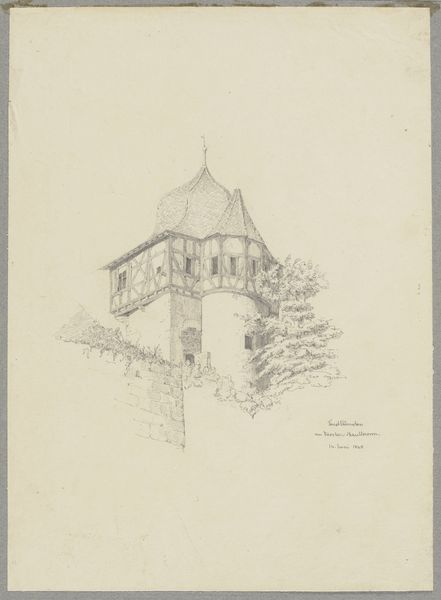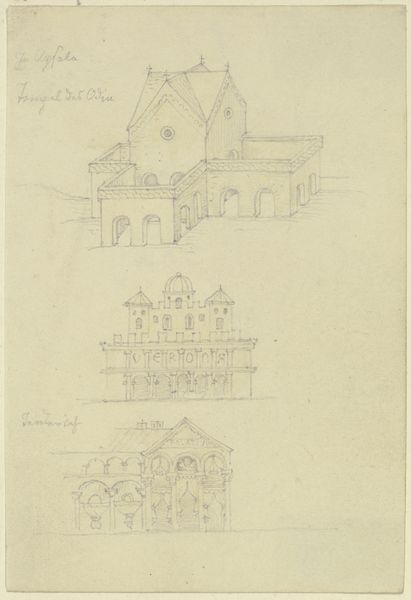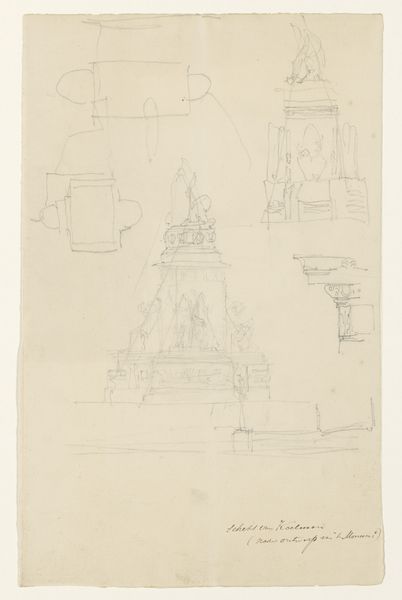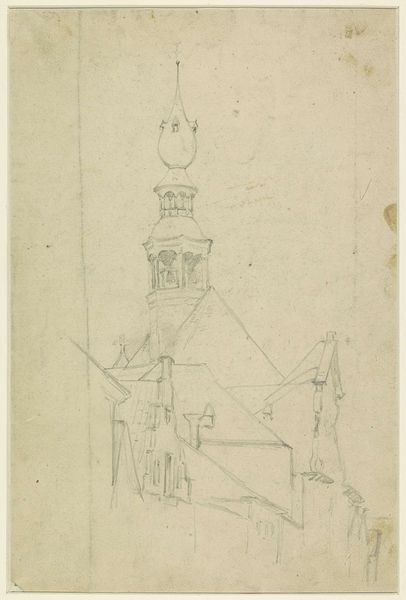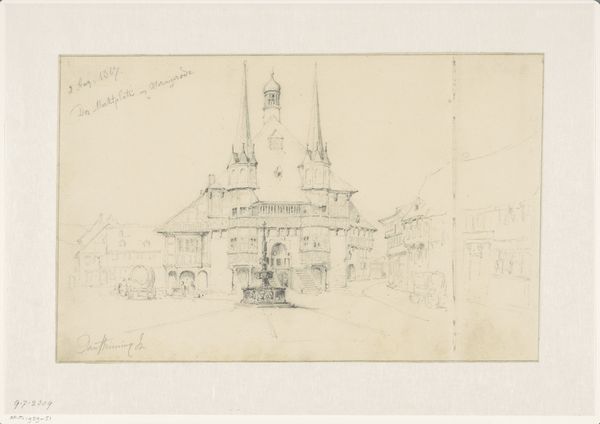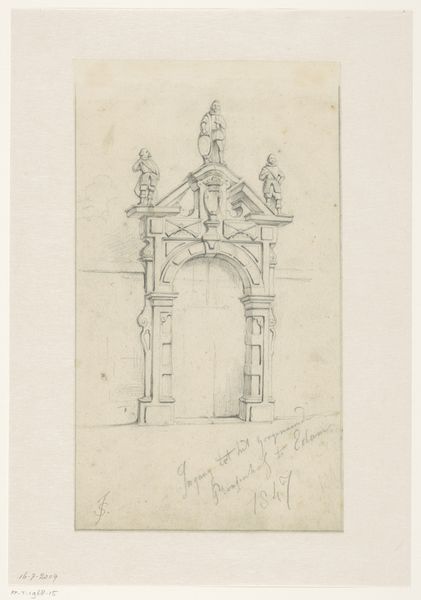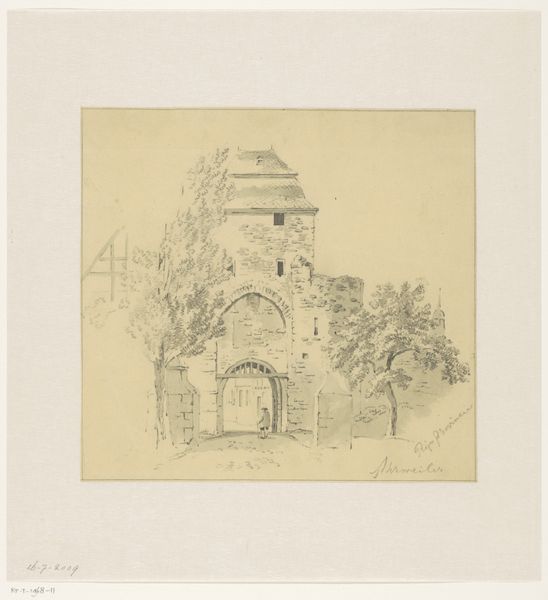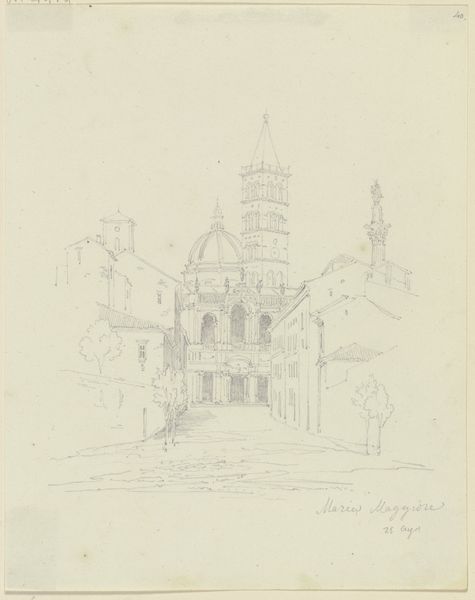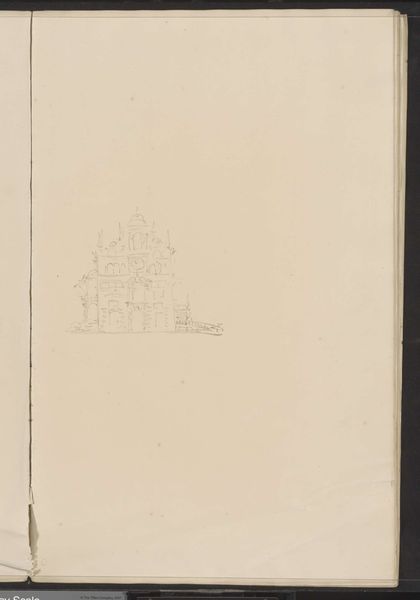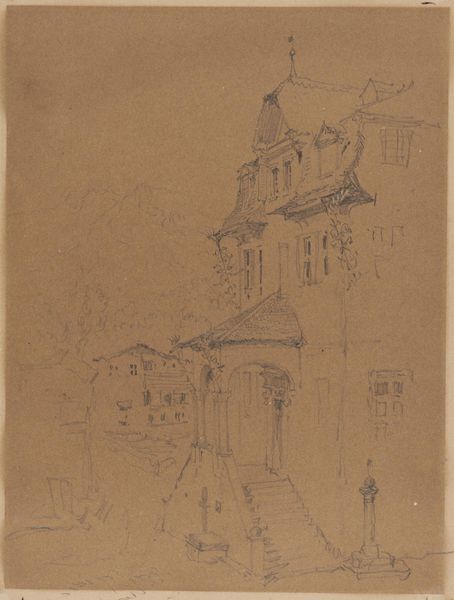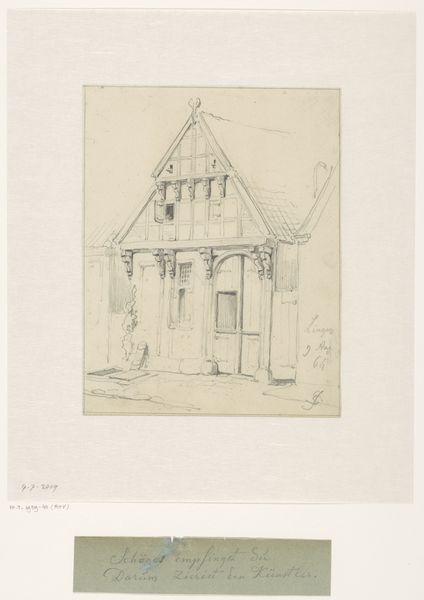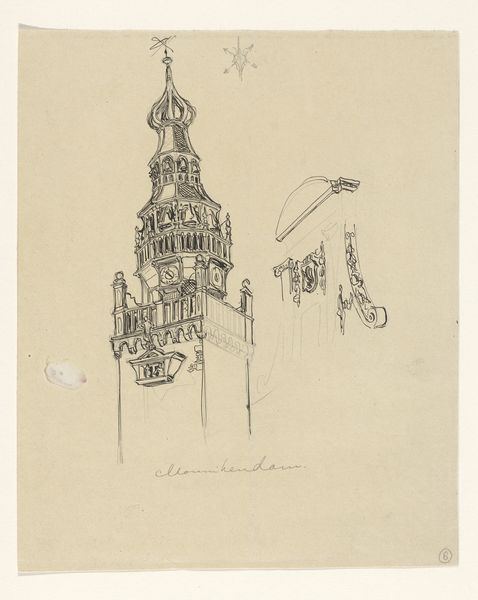
Façade van een huis aan de Johannisstrasze te Osnabrück, met rechts een uitgewerkt detail van de erker Possibly 1864 - 1868
0:00
0:00
drawing, pencil, architecture
#
drawing
#
landscape
#
pencil
#
cityscape
#
architecture
#
realism
#
building
Dimensions: height 261 mm, width 176 mm
Copyright: Rijks Museum: Open Domain
Curator: This detailed pencil drawing captures the facade of a house on Johannisstrasse in Osnabrück. It was created by Jan Striening, possibly between 1864 and 1868. What strikes you most about it? Editor: Its starkness, honestly. There's a sense of quiet dignity in its precise lines. It almost feels like a historical record presented in an intimate, personal way. The shadows hint at a hidden depth. Curator: It's interesting you mention "historical record," because, within the context of rapidly industrializing 19th-century Europe, artworks like this, often commissioned by burgeoning middle class, become ways of asserting identity. What did it mean to document your house? And further, what was its location in relationship to the rising industrial power? Editor: Exactly! By focusing on architecture, we can examine the interplay between public and private space and explore social class. Note how this detailed rendering grants status, underscoring that the residence itself becomes an emblem of identity, power, and progress. How does this structure function in the public imaginary of its era? Curator: Consider also the materiality itself: pencil on paper. It lends an air of authenticity. In addition to social status, the artist's choice emphasizes the meticulousness of the work. In the time of its creation, this precision connects directly to a claim to historical accuracy in light of rapid social transformation. Editor: And I keep thinking about what Striening’s intention might have been. Who was the audience for this drawing, and what kind of dialogue was Striening hoping to establish between his patron and the observer? Curator: Those are fascinating, complex questions without easy answers. Editor: Ultimately, this drawing highlights the intersection between the built environment, societal aspirations, and the quest for recognition during a time of upheaval. It shows us how seemingly static structures become stages where narratives of identity, progress, and cultural meaning play out. Curator: Precisely, it pushes us to think about whose stories are being centered and whose perspectives are rendered invisible in these carefully constructed visual narratives.
Comments
No comments
Be the first to comment and join the conversation on the ultimate creative platform.

